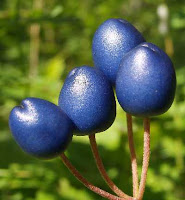When I was just a little roly-poly child, my parents used to take my brother and I on 'season walks' through the neighborhood. We'd stroll around hand-in-hand - in April, June, September, February - looking for signs of the changing season. We felt like detectives, keeping our eyes peeled for the patch of melting snow, the first crocus, the wilting daffodil, the reddening maple leaf, a patch of silvery frost clinging to a garden bed. There was always some sign. Our parents crowed like we were Holmes and Watson incarnate, come back as plump, towheaded toddlers.
 |
| Another upcoming phenological change: when our loons finally pick up and take off for sunnier weather; like many of Michigan's elderly residents, they'll hit up Florida. Love the beaches. |
Here on Isle Royale, living as we do smack in the middle of things, nature constantly thrown in our faces, we are all phenology detectives. It's hard NOT to notice as things change over the season; suddenly, the walk to work is swarmed with bright red berries, where earlier there had been white flowers; the view from the Visitor Center is changed by the newly blooming fireweed; long lines of merganser chicks appear in the harbors. Those employees who've been here for many seasons notice the differences from year-to-year, as flowers bloom earlier than usual, or chicks appear later.
The seasonal change is most poignant, I always think, as summer slowly begins to burn out into fall. It's especially the case here, because the end of summer means we'll all be leaving the island. Of course, many of the employees will stay on til the end of October, but the majority are gone by the end of September, and our interpretive staff starts dropping next weekend. On Isle Royale, humans are migratory creatures.
 |
| Fireweed seed pods. |
Here in Snug Harbor, we're just starting to see signs of a fizzling summer.
The fireweed flowers have nearly all become seed pods, ready to release their silvery puffs of wind-adapted seeds.
The chickie-poos swimming behind their mothers are, for the most part, nearly as big as she is.
The most common wildflower sighting is the broad-leaved aster, which to be honest, is kind of unspectacular after the spring explosions of orchids and columbine and the like.
Mayflies are gone, but swarms of dragonflies fill sunny clearings with their shows of hunting prowess.
The berries - raspberries, blueberries, serviceberries - are turning into shriveled ghosts of their past juicy selves.
And, of course, the ferry boat numbers dwindle, as employees begin to curb their grocery orders and pack up their rooms.



















